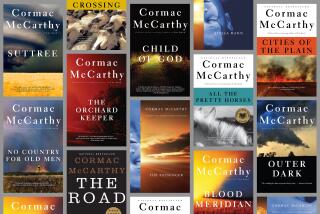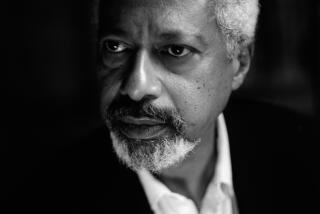New Sleuths in Skirts Act Like the Guys
Like virtually everyone else in America, a great friend is reading Patricia Cornwell’s new chart-topper, “Cause of Death.”
A man with a serious suspense jones (we shamelessly enable each other in this regard by swapping mysteries), he had a major insight while compulsively turning the pages of the latest Kay Scarpetta puzzler.
Unless you’ve spent the last decade in a Carmelite convent, you probably know that women are increasingly the protagonists of American thrillers. The British have always had their Miss Marple (created by Agatha Christie in 1930) and other genteel lady detectives. But, until recently, the American mystery novel was macho almost to the point of testosterone poisoning.
That all began to change almost 20 years ago when Marcia Muller published her first Sharon McCone book, about a hard-boiled female private eye in San Francisco (the latest McCone, about the country-music business, is called “The Broken Promise Land”). The tremendous popularity of Sue Grafton’s Kinsey Milhone series, starting with “A is for Alibi” in 1982, and the appearance of Sara Paretsky’s V.I. Warshawski the same year inspired hundreds of women, and even a couple of men, to write books with tough-talking, straight-shooting female protagonists.
The proliferation of what my pal calls “Joanna Snarf and Amanda Flapdoodle mysteries” is a genuine trend (albeit one that’s peaking, some say). Today, 49% of the people writing mysteries are women, most of them writing about women. In 1985, when David Geherin published “The American Private Eye,” all 27 of his “Galahads for Hire” shaved their faces in the morning, not their legs.
*
But has anything really changed, except the purported gender of the protagonists? My friend doesn’t think so. Somewhere deep into the new Scarpetta, as Kay happily cooked for one, slept alone and sawed through skulls in the Richmond morgue, my friend suddenly realized why men seem to be as willing to read about Scarpetta, Warshawski and Milhone as women. “These characters,” he revealed to me, “they’re really guys.”
What leads him to this extraordinary conclusion? Even in high heels, the distaff detectives inevitably behave like men. Virtually none is married, for instance, or want to be. When they are involved with men, they have no ordinary female expectations of commitment or fidelity. “They never say things like, ‘Why don’t we ever talk about Our Relationship?’ or ‘You never read me poetry any more, the way you did when we were courting,”’ things that my friend insists all women eventually say, or at least think very loudly.
These hard-boiled sisters are the answer to Henry Higgins’ frustrated question, “Why can’t a woman be more like a man?” They make Spenser and soulful Elvis Cole and Harry Bosch seem almost wimpy in comparison. They have none of the fears that real women, no matter how liberated, have in a world in which they are too often victimized.
Their idea of a great date is Chinese takeout eaten standing up after an hour or so of competitive target-shooting. They are girls who like to clean their guns and the bad guys’ clocks. They don’t care how their hair looks, they never shop recreationally and they don’t cry. When they think of accessories, they think of silencers, not shoes. If these were real women, not fictional characters, they’d be running off to get their estrogen levels checked.
A classic example of the female-in-name-only sleuth is Elmore Leonard’s Karen Sisco, a federal marshal featured in his forthcoming novel, “Out of Sight.” The character debuts in a Leonard short story in the new Mary Higgins Clark Mystery Magazine that Family Circle is giving a trial run. In “Karen Makes Out,” Leonard writes of his heroine, “She could wear her favorite Calvin Klein suit, the black one she’d bought at a discount house, her Sig Sauer .38 for evening wear snug against the small of her back, and no one would think for a moment she was packing.”
Right.
She may be blond, she may wear a size 6, but she sounds like a guy to me.
More to Read
Sign up for our Book Club newsletter
Get the latest news, events and more from the Los Angeles Times Book Club, and help us get L.A. reading and talking.
You may occasionally receive promotional content from the Los Angeles Times.






